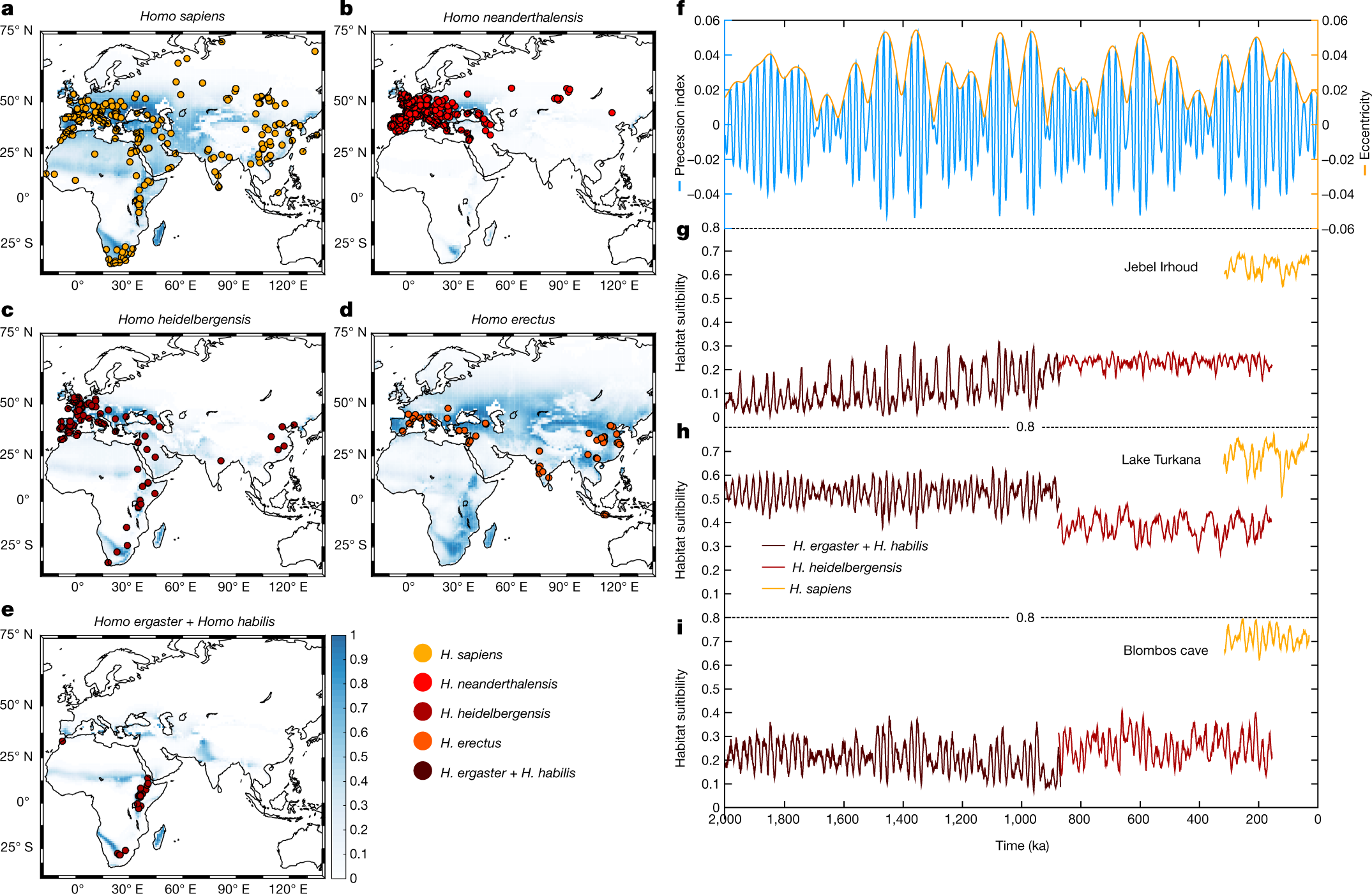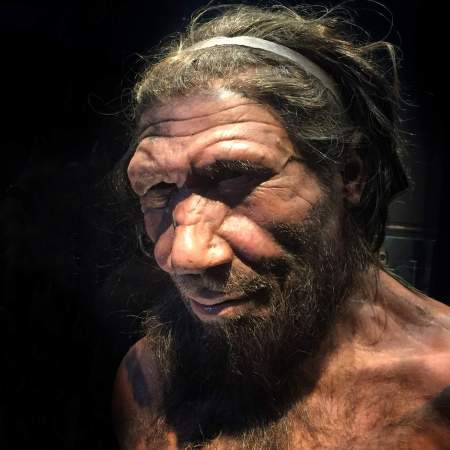

Humans are the most widely distributed animal on Earth. We live in the alpine plains of the Andes, and the mangrove swamps of the Mekong Delta. We’ve built civilizations on tropical islands scattered around the equator, and on tundra north of the Arctic circle.
A model of human species and climate change published Wednesday in the journal Nature proposes a way of understanding why that might be: The most widespread hominins—including us—were those that had adapted to changing climate.
The team began building the model by looking at how the climate has fluctuated over the last 2 million years in response to small wobbles in Earth’s orbit. Then, they overlaid the locations of fossil and artifacts belonging to different species on top of that climate model to estimate the habitat conditions that each species could clearly survive in. Those habitats allowed the team to predict global ranges for our ancestors. And those favorable conditions tracked the actual location of human artifacts.
“I was most excited about the fact that we could demonstrate that the real time evolution of climate…influenced where actual ancient humans lived,” says Axel Timmermann, a climate modeler at Pusan National University in Busan, South Korea, and the paper’s lead author. “If the climate evolution had been different, anthropologists nowadays would find the ancient human fossil specimens in different regions or corresponding to different ages. In other words, the anthropological and archaeological records implicitly include information on the climate conditions.”
The model helps illuminate the specific environmental conditions that our ancestors thrived in, and provides clues as to where we might look for yet-to-be discovered traces of them.
Homo erectus, which first emerged about 2 million years ago, was comfortable in diverse ecosystems, with a habitable zone stretching from Western Europe across the Central Asian steppe. That versatility fits the fact that they were the first of our ancestors to unequivocally migrate from Africa—the species was first identified from fossils found in Indonesia. And it’s a stark contrast to the older Homo ergaster and Homo habilis, the oldest species modeled. Their fossils have been found mainly along the Great Rift Valley in Kenya and Ethiopia, and in the highlands of South Africa, but the model suggests that the species could be found in a long band of livable habitat stretching across Central Africa, at what’s now the southern edge of the Sahara Desert.

Homo heidelbergensis, believed to be the most recent common ancestor of modern humans and Neanderthals, seems to have been somewhere in the middle, following a wet zone through the Rift Valley and into the Levant region in Western Asia before finding a suitable habitat in Europe.
The range of H. heidelbergensis also suggests a specific origin for the evolution of Homo sapiens. According to the climate model, both species were well-suited to the climate of Southern Africa between 200,000 and 300,000 years ago—during the exact period that modern humans enter the fossil record. But a period of drought could have put pressure on our ancestors, leading to population declines, genetic drift, and eventually, the evolution of modern humans.
“We determined that our own species was best equipped to cope with dry conditions,” the authors write. That could have been because our bodies are suited for drought, or because we had adapted culturally—which could have allowed us to expand across the continent of Africa, and then into the rest of the world.
Whether or not humans evolved in one place is a hotly debated question among paleoanthropologists. Another theory suggests that Homo sapiens didn’t have a single homeland, and instead emerged from the slow combination of ancestral populations across the continent. But Timmermann says that this patchwork origin isn’t supported by the team’s findings. “According to our calculations, other areas across Africa do not provide enough habitat overlap to justify the existence of species transitions,” he says.
“The paper does much to strengthen the hypothesis of strong causal connections between climate and human evolutionary events,” says Denné Reed, an anthropologist at the University of Texas at Austin who studies human evolution and ecology and was not involved in the new paper. But he has questions about how the paper determined which ancient sites belonged to which species.
In particular, the paper attributed more than a dozen ambiguous European archaeological sites to H. erectus, which could dramatically expand the apparent range of the species. “It’s tough to be sure without replicating the analysis,” says Reed, “but I suspect a lot hinges on [those sites], all dated by methods with high error margins. Would the results hold if these European sites were excluded?”
[Related: Meat (probably) didn’t make us human]
The research is likely to serve as a foundation for future work on climate and evolution. And Reed says it highlights the importance of clearly and consistently defining individual human species in the fossil record. A commentary accompanying the piece noted that the analysis excluded several newly identified human ancestors, like Siberia’s Denisovans, who are known from only a few instances in the fossil or genetic record. And the distribution of known fossils is shaped by research funding and interest, as well as by prehistoric conditions—which could skew our understanding of where ancient people truly lived. A next step would be to simulate the location of fossils based on these habitats and see if those projections match reality, Timmerman says.
Still, theories of human evolution have been criticized for overemphasizing the explanatory power of climate. Neanderthals, some of our closest extinct relatives, are often described in popular media as “cold adapted species,” biologically suited for ice ages and high latitudes. But as archaeologist Rebecca Wragg Sykes points out in her recent book Kindred, Neanderthals would have lived in Europe when it was both open tundra and lush forest.
The new paper offers a more nuanced argument, that humans were indeed constrained by their environment: “Ancient humans always had to struggle for survival,” Timmermann says, even under optimal conditions. But by adapting to a changing world, Homo sapiens became a generalist species—an adaptation that allowed us and our ancestors to spread across the world, far beyond the places we first thrived.
Update: This story was updated to include comments from an independent expert.























